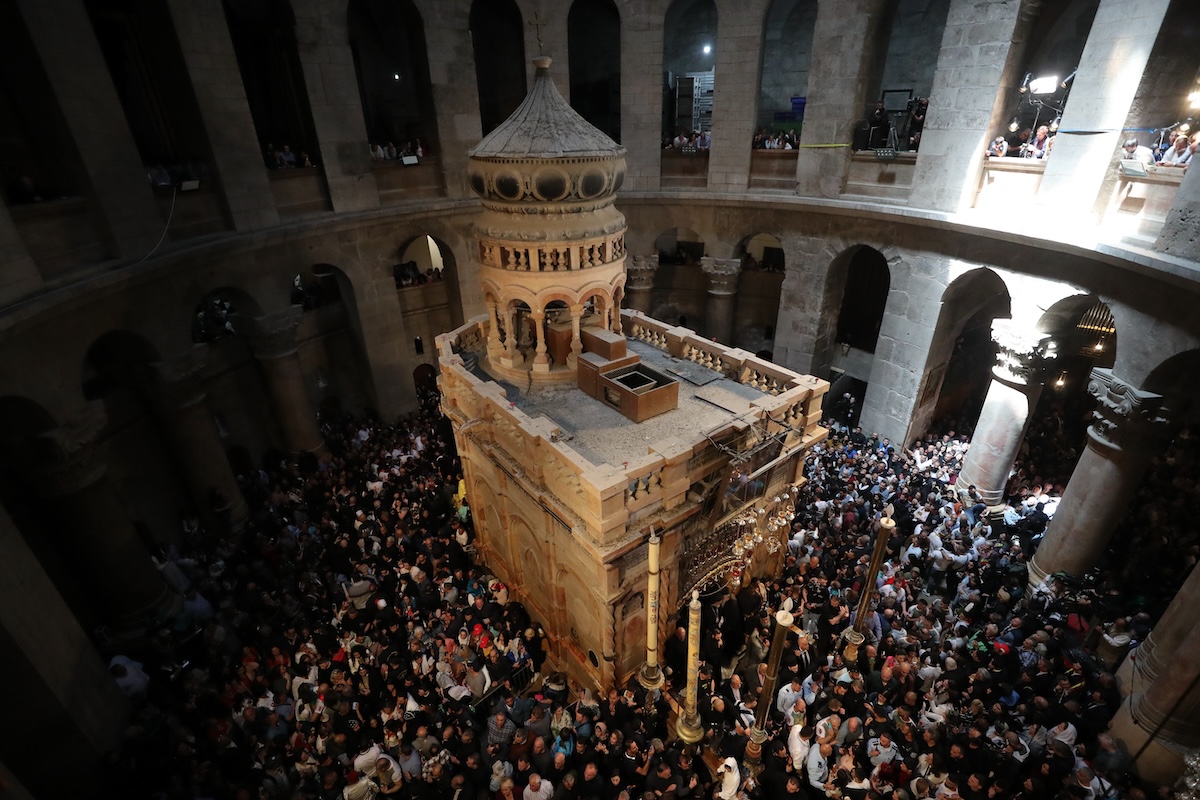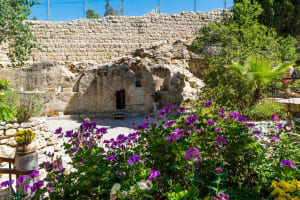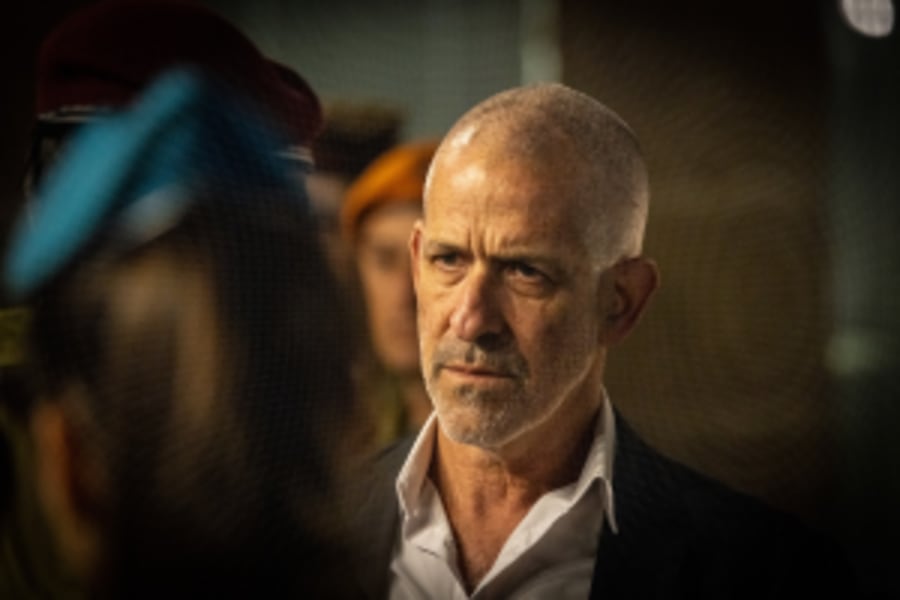Why are there two Golgotha sites?

If you’ve ever visited Jerusalem, you may have noticed that two different locations are identified as Golgotha. And since the tomb of Jesus was right next to Golgotha (according to John 19:41-42), there are also two different tombs.
Which one is real, and which one isn’t?
And does it matter?
The first site of Golgotha is the Church of the Holy Sepulchre. Originally built in the 4th century, it’s situated within the current walls of the Old City, and at the heart of the Christian Quarter. It’s the end station of the Via Dolorosa pilgrimage road and has been venerated as the original Golgotha and Tomb of Jesus for many centuries. It was built and managed by the Eastern Roman Byzantine (Greek Orthodox) church, but since the Crusades, it has been shared with the Catholics, as well. Today, the Church of the Holy Sepulchre is managed by the Greek Orthodox, Roman Catholic, Armenian, Coptic, Syriac and Ethiopian churches under a complicated status-quo agreement from 1757. It is considered a very “high church,” with an abundance of incense, candles and statues, with everything under one roof.

The second site identified as Golgotha is the Garden Tomb in Jerusalem. Established in the late 19th century, this site is located outside the Old City and is managed by a British non-denominational charitable trust that is a member of the World Evangelical Alliance.
Its beautiful outside garden contains an ancient wine press and a cistern, as well as plaques with Bible verses. There are various benches and alcoves throughout the garden to gather and pray, and just spend time in God’s presence.
Can I turn over my cards here? I believe the first site is more likely to be the historically correct Golgotha, but I’d much rather prefer to spend time in the second.
The earliest Christians would have known the location of Golgotha. This is not the kind of information that would be easily forgotten, even after a century or two. Less than 300 years passed from Jesus' death and resurrection until the Roman Empire adopted Christianity. There's no reason to suspect that Macarius, the bishop of Jerusalem at the time, would have lied about or fabricated the location of Golgotha.
For the first few decades after Jesus’ resurrection, the existence of the empty tomb must have been instrumental in spreading the Gospel. If the tomb held a dead body, or if its location was unknown, people would not likely have believed the Gospel was true in the first place. I’ve personally heard secular historians say there is no way to explain the quick spread of Christianity unless there was an actual empty tomb they could point to.
This might also explain why, in 135 A.D., the Roman Emperor Hadrian quickly filled the tomb with soil and built a pagan temple on top of Golgotha. Why in 135? Because at that time, Hadrian had recently destroyed Jerusalem after the Bar-Kochba Revolt and expelled all the Jews and Christians. He built a pagan city, Aelia Capitolina, on its ruins. He erected pagan temples on top of both the Temple Mount and Golgotha. But this deliberate desecration of holy places had an unexpected effect – his actions helped preserve the knowledge of the tomb's location. He also extended the walls around Aelia Capitolina to include this [pagan] temple, which, during the time of Jesus, had been outside the city walls.
Once Constantine had made the Roman Empire Christian after his vision in 312 A.D., his mother Helena traveled to Israel to find all the holy places and establish churches. With the help of Macarius, the bishop of Jerusalem, and Eusebius, the bishop of Caesarea, they excavated the area under the pagan temple. According to legend, they found the tomb and three crosses – one of them having the power to heal the sick, and thus being “the true cross,” which they saved as a relic. Fragments of this cross are still preserved and revered in various churches all over the world. They tore down the pagan temple, removed the filled-in soil in a cave under it and found Jesus’ empty tomb.
The shrine initially built over the site eventually evolved into a much larger church, which was destroyed multiple times throughout the centuries by earthquakes, fires, and attacks, including those by Muslims, but it was consistently rebuilt. If you visit the site today, much of the current church structure dates back to the Crusader period, with renovations carried out in the 19th century and later.
Protestants raised doubts about the authenticity of the site almost from the start of the Reformation. Questioning old belief systems in light of the scriptures was their thing, and casting doubt on this claim was no different. We see a number of criticisms in the 17th century, but they began to proliferate even more in the 19th century when more and more Protestants came to see the holy site.
You might think that this was just because they didn’t like the site; after all, it’s a dark candle-lit church filled with Gregorian chants, incense and statues. And you may be right. But they also had some serious questions about whether this really was the original spot. This was the time of the development of modern archaeology, which often disproved old ideas about the locations of various biblical events, so it was natural that this would come into question, too.
“Was this supposed original Golgotha really outside of the walls at the time of Jesus?” they asked. “It’s suspiciously close to the Citadel and to the Temple Mount. Maybe the pagan temple was just there because it was on a city crossroad in ancient Aelia Capitolina? Wasn’t it more plausible that a place of execution would take place along a major road outside Jerusalem, say, the main road to Damascus? And hey, there’s a hill right there, north of Damascus Gate, that looks like a skull! And the whole area around it is filled with ancient tombs – a necropolis of the time. Could one of those be Jesus’ tomb?”
Moreover, an ancient Christian tradition associated that general area with the martyrdom of Stephen, strengthening the idea that it was a place of executions. The spot would have been strongly visible for travelers, creating the scary deterrent the Romans intended. It all made sense.
Apart from such skepticism, there were theological reasons that many Protestants wanted this to be true. They simply couldn’t imagine that God would have allowed his original tomb to be desecrated for centuries by heretic Orthodox and Catholics.
In 1878, Lieutenant Claude R. Conder wrote the following about the Church of the Holy Sepulchre: “I should be loath to think that the Sacred Tomb had been a witness for so many years of so much human ignorance, folly, and crime.” And Major-General Charles Gordon, who came to Jerusalem in 1883, was certain that the skull-shaped hill near the Damascus Gate was the original Golgotha, not only because of the reasons mentioned above but because Leviticus 1:11 states that the sheep for burnt-offering should be slaughtered “on the north side of the altar.” And also because, as he wrote: “From it, you can see the Temple, the Mount of Olives and the bulk of Jerusalem. His stretched out arms would, as it were, embrace it: ‘all day long have I stretched out my arms’” (Isaiah 65:2).
At this point, it was just a matter of time until one of the ancient tombs from the surrounding area would be identified by Gordon as Jesus’ original tomb. John states in his Gospel that Jesus’ grave was in a garden, so when Gordon found an ancient cistern and a wine press near a nearby ancient tomb, the matter was settled. Add to this that the tomb even had a stone groove running along the ground outside it – a perfect slot for a stone that could be rolled in front of it.
So is it the original tomb? Probably not. The tomb is a few centuries older than Jesus’ time, and even if older tombs were often reused, the Gospel clearly states that Jesus’ tomb was newly cut. In addition, archaeological evidence suggests that the cistern, the groove, and the winepress are dated to the time of the Crusaders.
Does that matter? I argue that it doesn’t. They built the Garden Tomb around the tomb, and as Jerusalem expanded and cluttered the area with houses, cars and traffic, the garden around this tomb became a beautiful and quiet haven of silence, prayer and contemplation.
The skull hill still has a Muslim graveyard on top and stands next to a bustling bus station, but from the Garden Tomb, there is a lookout point where you can see the hill – a grim-looking image of a skull staring at the many tourists arriving to see the spot that might have been the original Golgotha.
So, even if it isn’t the right spot, being in the Garden Tomb means that you’re outside, in a garden, near an ancient tomb, just like Mary Magdalene had been as she wondered why the tomb was empty. If you could ask her, or any of the disciples, and bring them forward in time, they’d probably tell you the Garden Tomb looks and feels a lot more like the original.
And to me, that’s all that matters.

Tuvia is a Jewish history nerd who lives in Jerusalem and believes in Jesus. He writes articles and stories about Jewish and Christian history. His website is www.tuviapollack.com














